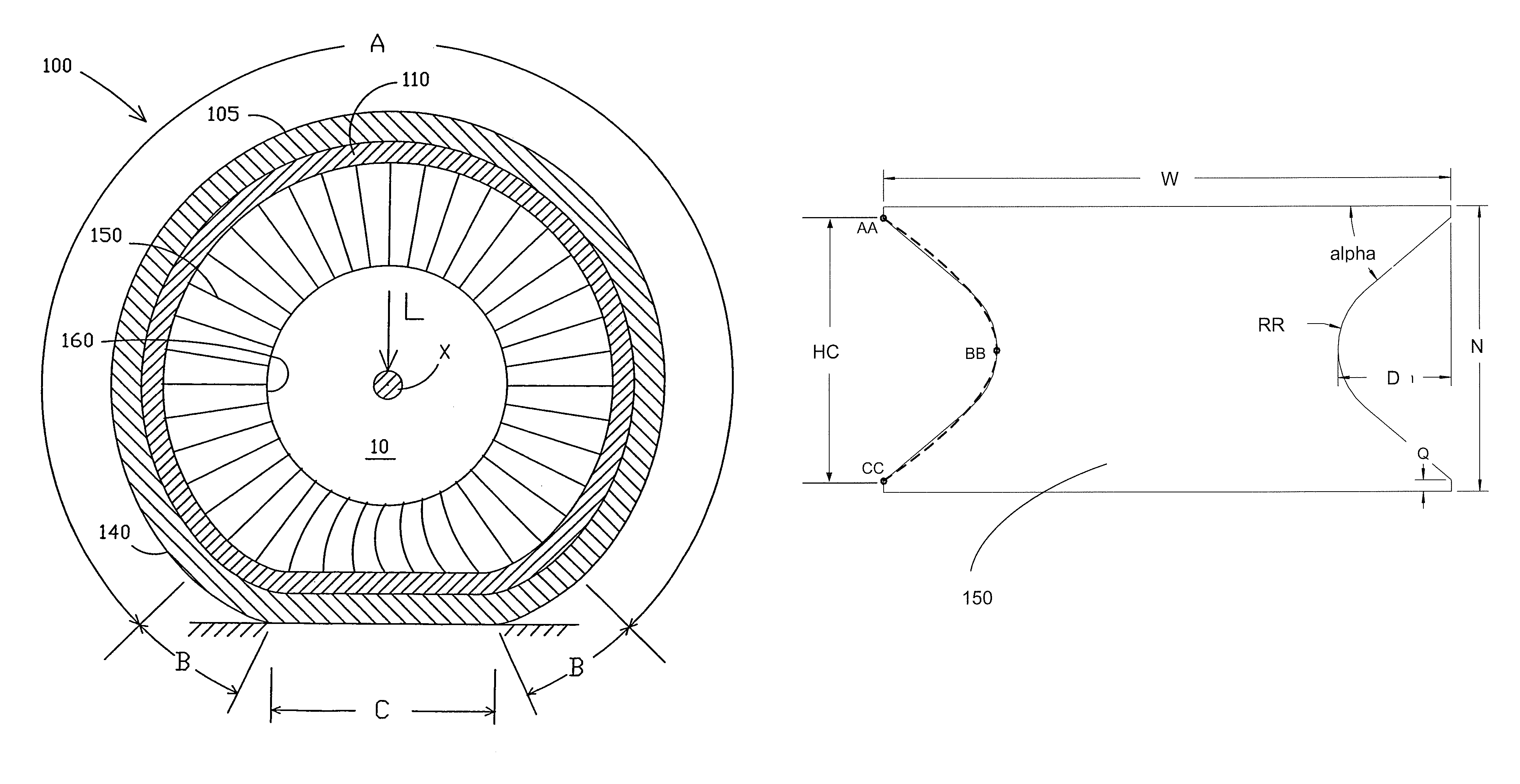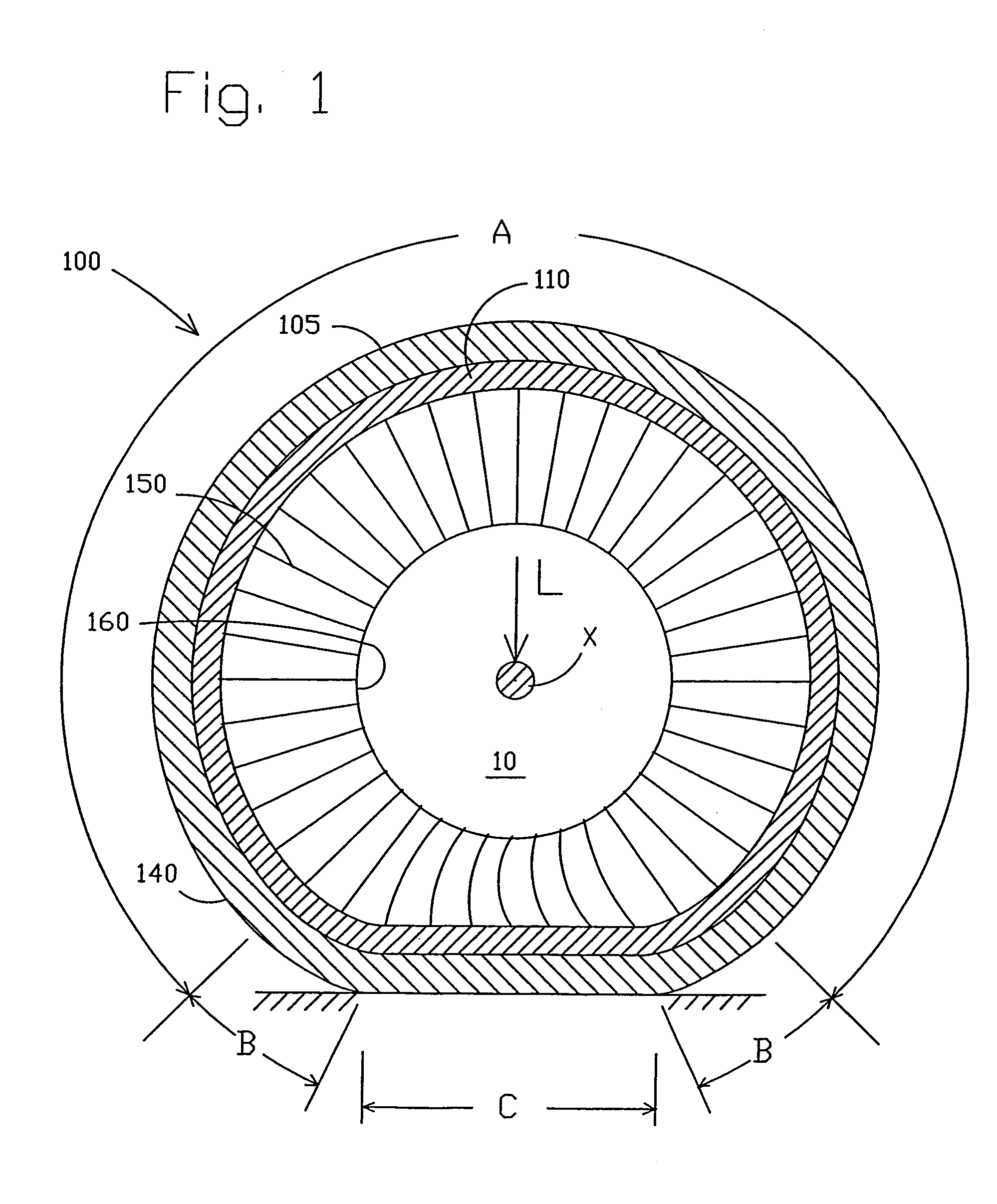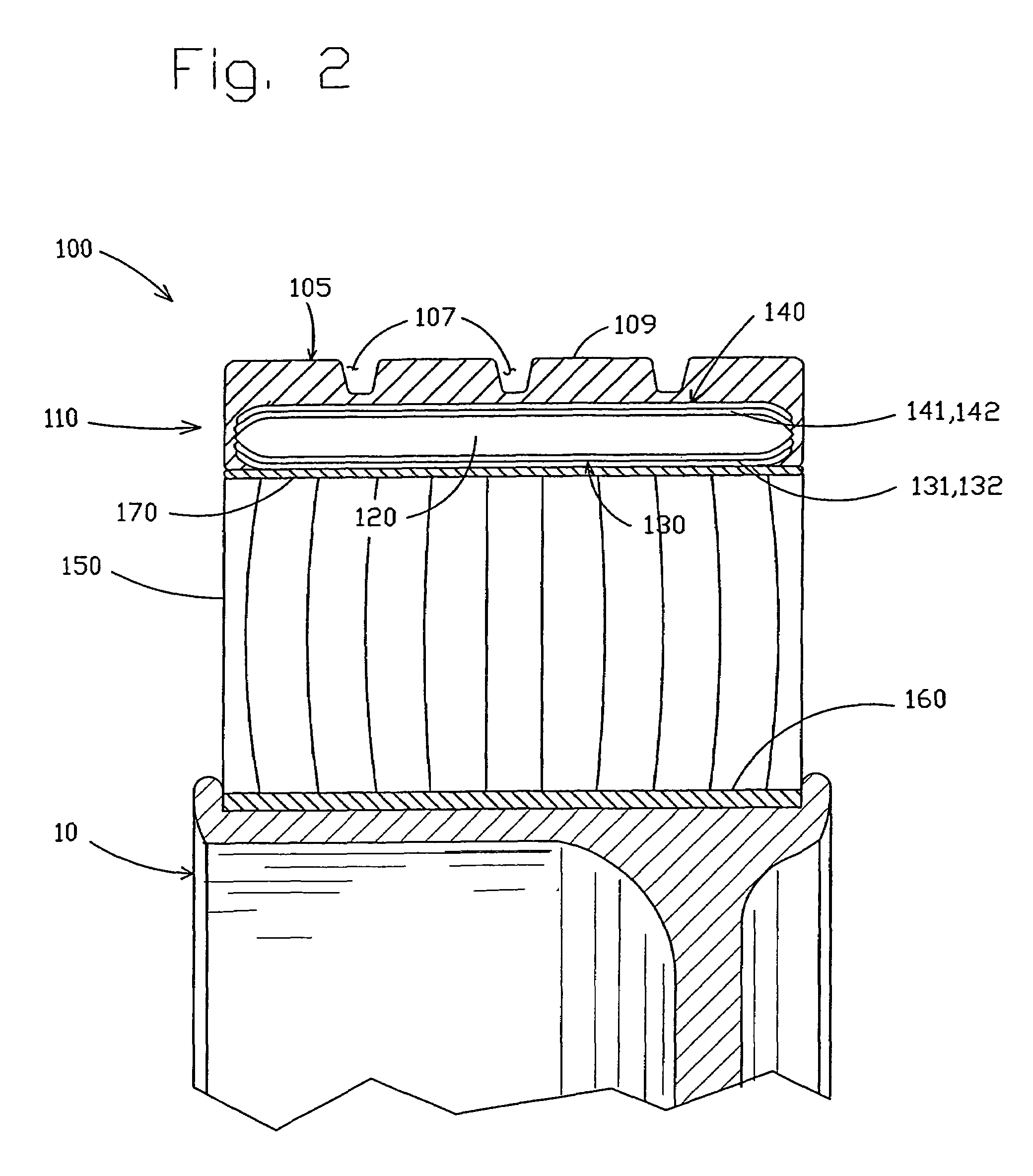Non-pneumatic tire
a technology of non-pneumatic tires and wheels, which is applied in the direction of wheel attachments, tyre parts, transportation and packaging, etc., can solve the problems of non-pneumatic alternatives, heavy and stiff tires, and solid tires, and achieves low effective radial stiffness, high effective radial stiffness in tension, and support the mass of a vehicle
- Summary
- Abstract
- Description
- Claims
- Application Information
AI Technical Summary
Benefits of technology
Problems solved by technology
Method used
Image
Examples
Embodiment Construction
[0037]The following terms are defined as follows for this description:
[0038]“Equatorial Plane” means a plane that passes perpendicular to the tire axis of rotation and bisects the tire structure.
[0039]“Meridian Plane” means a plane that passes through and includes the axis of rotation of the tire.
[0040]“Modulus” of elastomeric materials means the tensile modulus of elasticity at 10% elongation measured per ASTM Standard Test Method D412.
[0041]“Modulus” of the membranes means the tensile modulus of elasticity at 1% elongation in the circumferential direction multiplied by the effective thickness of the membrane. This modulus can be calculated by Equation 1, below, for conventional tire steel belt materials. This modulus is noted with a prime (′) designation.
[0042]“Shear Modulus” of elastomeric materials means the shear modulus of elasticity and is defined equivalent to one-third the tensile modulus of elasticity as defined above for elastomeric materials.
[0043]“Hysteresis” means the ...
PUM
 Login to View More
Login to View More Abstract
Description
Claims
Application Information
 Login to View More
Login to View More - R&D
- Intellectual Property
- Life Sciences
- Materials
- Tech Scout
- Unparalleled Data Quality
- Higher Quality Content
- 60% Fewer Hallucinations
Browse by: Latest US Patents, China's latest patents, Technical Efficacy Thesaurus, Application Domain, Technology Topic, Popular Technical Reports.
© 2025 PatSnap. All rights reserved.Legal|Privacy policy|Modern Slavery Act Transparency Statement|Sitemap|About US| Contact US: help@patsnap.com



